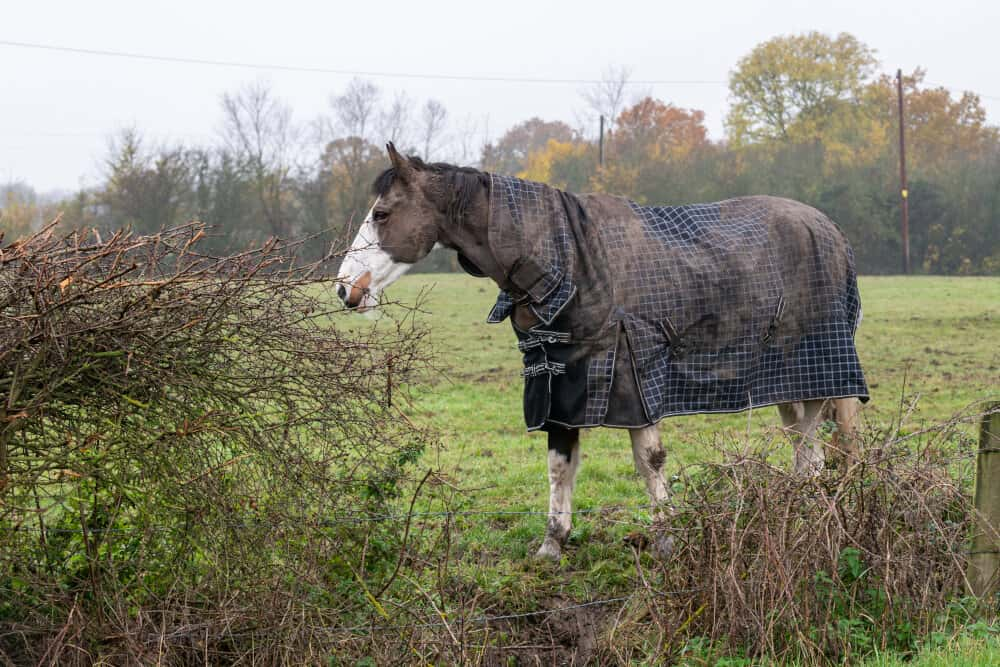Are lightweight turnout horse rugs needed in springtime?
When the tulips start appearing, the clocks go forward, and we start enjoying the lighter nights and brighter weather, it is easy to assume that spring weather means we can finally ditch out winter coats. However, you and I both know this isn’t always the case and the same is true for our equine friends! Determining whether your horse needs to wear a lightweight turnout rug in the spring will depend on several factors, including the temperature outside and the age and condition of your horse. Let’s explore the details…
What is classed as a lightweight turnout horse rug?
Turnout rugs are designed to keep your horse clean and dry outside while offering a little added warmth in cooler weather. A lightweight turnout rug is classed as a rug with between 50g and 100g of fill. Despite their buoyant nature, they are waterproof and durable enough to keep your horse dry during those unpredictable April showers and protected whilst playing out in the field. It is important to note that stable blankets are slightly different to turnout rugs, they are not waterproof and are meant to be worn while your horse is inside.
Influential factors
Deciding on whether to rug your horse or not will depend on several factors. Nobody knows a horse as well as its carer, but there are a few things to consider when making your decision:
Temperature
A horse feels the cold slightly differently to humans because they boast a wide thermoneutral zone. The thermoneutral zone describes a range of temperatures in the immediate environment where a healthy horse can maintain body temperature without needing to use energy beyond its normal metabolism.
A healthy horse typically feels cold when the temperature outside is below 0°C. They feel hot when the weather creates a temperature of 25°C. Therefore, the area between these two temperatures is a horse’s thermoneutral zone.
Compared to us humans (who have a much narrower zone range of between 25 and 30°C) a horse’s thermoneutral zone is vast. So, even though we might consider it cold outside, horses will still feel comfortable. This is why we should never judge our horse’s comfort based on our own.
On top of this, horses hold heat better than humans and are designed to cope with the cold. Their fur coats will hold heat for longer and when the temperature drops below 0°C a horse will retain heat via its higher metabolic rate. He will also naturally seek shelter, his blood flow will lower to let his limb temperature decrease and, if it gets super cold, he will start to shiver in a bid to warm up. He will also eat more as the energy stored in food will help the horse to maintain his core body temperature. Heat is generated by breakdown of food.
Weather conditions
The weather can be temperamental in the spring and showers can happen quickly and unexpectedly. For equines, staying dry is a big part of staying warm. A horse’s coat will shed some rain but can become overwhelmed when the precipitation lasts a long time or is driven by a strong wind. A lightweight rug will help ensure your horse is dry, protected and kept warm for longer too.
Coat conditions
A horse that has not been clipped usually does not need a rug. However, a rug may be necessary for clipped horses and for horses that have problem with the formation of their winter coat due to illness or age.

Age
Just like us, older and younger horses may feel the cold more and may need to be rugged sooner.
In conclusion, most horses will not need rugging until external local temperatures drop to 5-10°C. However, this may be slightly sooner if your horse is on the mature or young side, underweight, or clipped.
If you are looking to add to your field shelters or other timber structures, our team at National Timber Buildings would be happy to advise. We are considered a household name in the stables and bespoke timber buildings market, and we design and manufacture all timber structures in house with Tanalised®, quality wood for longevity.



